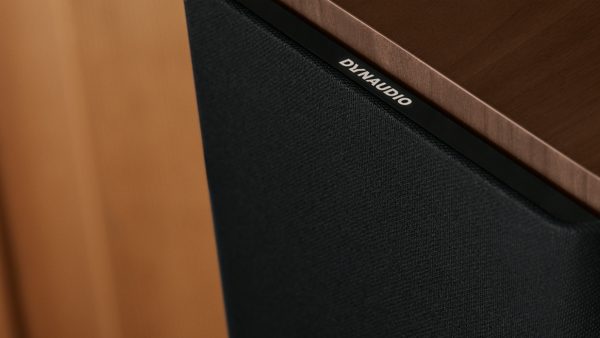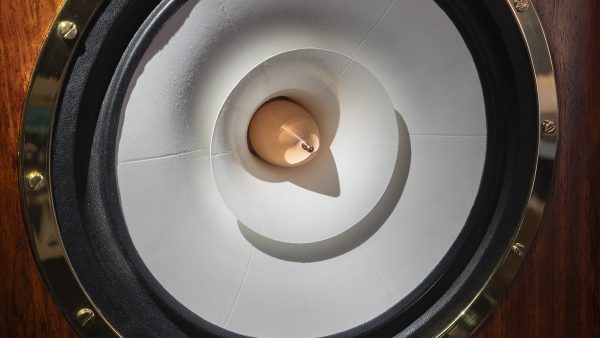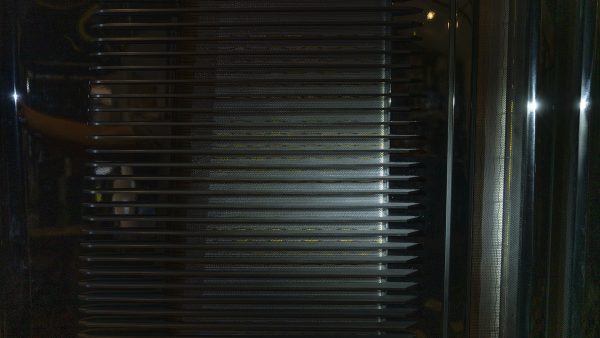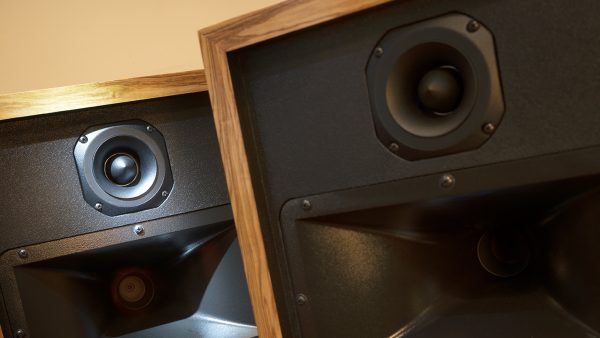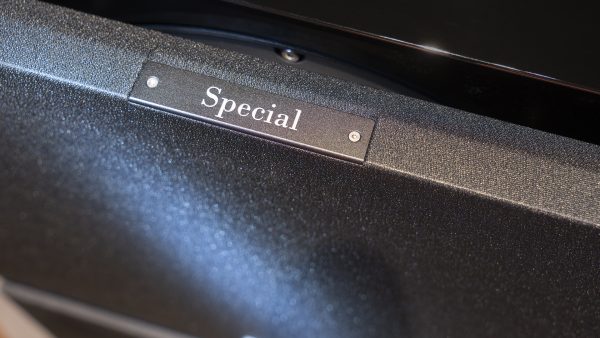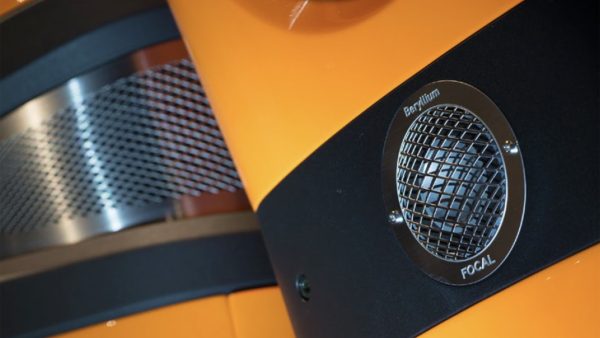Listening to Joe Jackson’s “Another World” (from Night and Day), the svelte YG Carmel 3s indeed provide another world, delivering an incredibly wide soundfield, awash in depth, dynamics, and tonal clarity. To think this model is the entry of YGs Reference lineup! About a year ago, we had the Hailey 3 in for review. Although the Carmel 3 delivers a bit less sonically, due to its smaller size, there’s something lovely about this simple yet highly refined two-way system. This is a personal bias, just so you know.
The Carmel 3s also arrive at the tail end of our Summit review, presenting the listener and potential customer with a major choice, as they are both priced about the same. (at last price check, they were both $30k/pair, but the world is a wacky place right now) We’ll go further into detail later as to why you might prefer one over the other.
These speakers prove incredibly easy to set up, and on the long wall of my 36 x 24-foot listening room, not only do they provide an immersive experience, but their single 7.25-inch woofer also serves up plenty of low-frequency extension. Moving along to Kruder & Dorfmeister’s “Bug Powder Dust” (from The K&D Sessions) is solid and convincing. A string of hip-hop tracks reinforces this opinion. You could add the YG Descent sub or a pair of REL Carbon Specials for about $10k for that last bit of extension, should you need it. However, I am not saying you need a sub to enjoy the Carmel 3s.
It all depends on your room, the type of music material you choose, the level of volume you require, and your budget. Although we no longer had the Descent here when the Carmel 3s arrived, using that sub with my reference pair of Cairn monitors proved to be an excellent matchup. While I am a huge REL fan, using a YG subwoofer with a pair of YG Speakers is a perfect combination and is a flawless matchup. You can always grab a pair of Carmel 3s now and step up when spare cash becomes available.
Much as I love a well-calibrated subwoofer as part of a great music system, the Carmel 3 is such an engaging speaker that I suggest spending some time with them sans sub for a while, so you can really become familiar with them. Then you can accurately decide if you want/need a subwoofer.
Moving the Carmel 3s to my 13 x 18 foot room, they lose some of the massive soundstage effect, but transform in an equally interesting and compelling way. In the smaller room, they achieve more front-to-back soundstaging, and while not as broadly expansive from left to right as they are in the big room, they pressurize the smaller room in a more dynamic manner. This is without a subwoofer, btw.
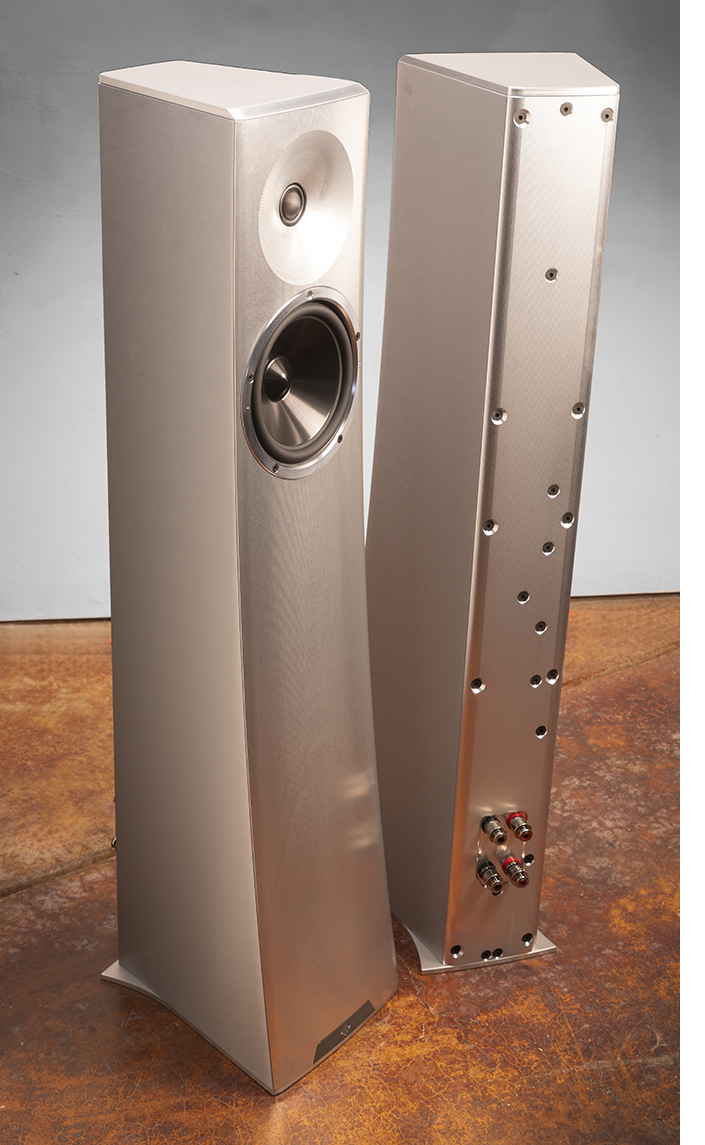 Unpack and set up
Unpack and set up
Arriving in a single crate, the Carmel 3s weigh 85 pounds each, so depending on your strength and fitness level, you may or may not need a friend to help. The lack of a port in the back makes these more challenging to move, despite their small size. Chalk it up to that sleek finish. I suspect you either love or hate the aluminum finish, and this is part of the reason they developed the Peaks lineup.
Put me in the love ’em column. Our review sample is what you see here in silver. Black is a standard finish, but if I can be manipulative for a second, black anodized anything never looks as good as the day you unpack it. The silver is so easy to keep looking fab. Don’t say I didn’t warn you. Casual comments from friends were all positive – even people I knew would shy away from an aluminum-bodied speaker (even a couple of buds with Sonus faber speakers) made a point to comment on the sheer beauty of the YGs.
With wide dispersion, the Carmel 3s are easy to set up and get 88% of the way there in a hurry. The US distributor, Hiram Toro, stopped by for the day to review my work, making only minor adjustments to the setup in the large room. We played a handful of familiar tracks (to him), and I put him back on the plane, satisfied that good sound was happening. If you had the good fortune of running into him this year at Axpona, you know he always puts together great room sound.
The smaller room requires more careful fine-tuning to achieve a perfect balance between room gain, bass weight, and smoothness in the upper bass to midrange range. Plan on an hour or two of careful listening with tracks you are intimately familiar with – a little less if you have a friend to make minor adjustments while you listen.
Rounding out the system
YG lists the sensitivity of the Carmel 3 as 87db/1-watt. Most of the review listening was done with the Pass XS300 monoblocks, with initial break-in done with the Pass X600.8. However, after trying several low-powered amplifiers from PrimaLuna, Octave, and Canor, the Carmel 3 proved to work well with tubes and doesn’t require a lot of power to get the job done. That these speakers are so involving at low volume levels is further proof of a well-thought-out design.
Digital music was provided by the dCS Vivaldi ONE, with analog delivered from the Bergemann Thor turntable (utilizing a Bergemann linear track arm and a modified Lyra Aetna SL, modified by Ana Mighty Sound) via the Pass XP-17 phono stage. The Pass XS Pre was used as the control center, and the system was cabled with a combination of Cardas Clear and Clear Beyond cables.
It’s worth mentioning that the Carmel 3s use jumpers if you lack speaker cables with bi-wire ability. As with our Hailey review, we used a set of Cardas Clear jumpers, and I highly recommend paying attention to this aspect of the YGs. With speakers this resolving, everything makes a difference in the final sound. Big thanks to Brian Von Bork and the Cardas crew for getting a pair of these shipped over for the review.
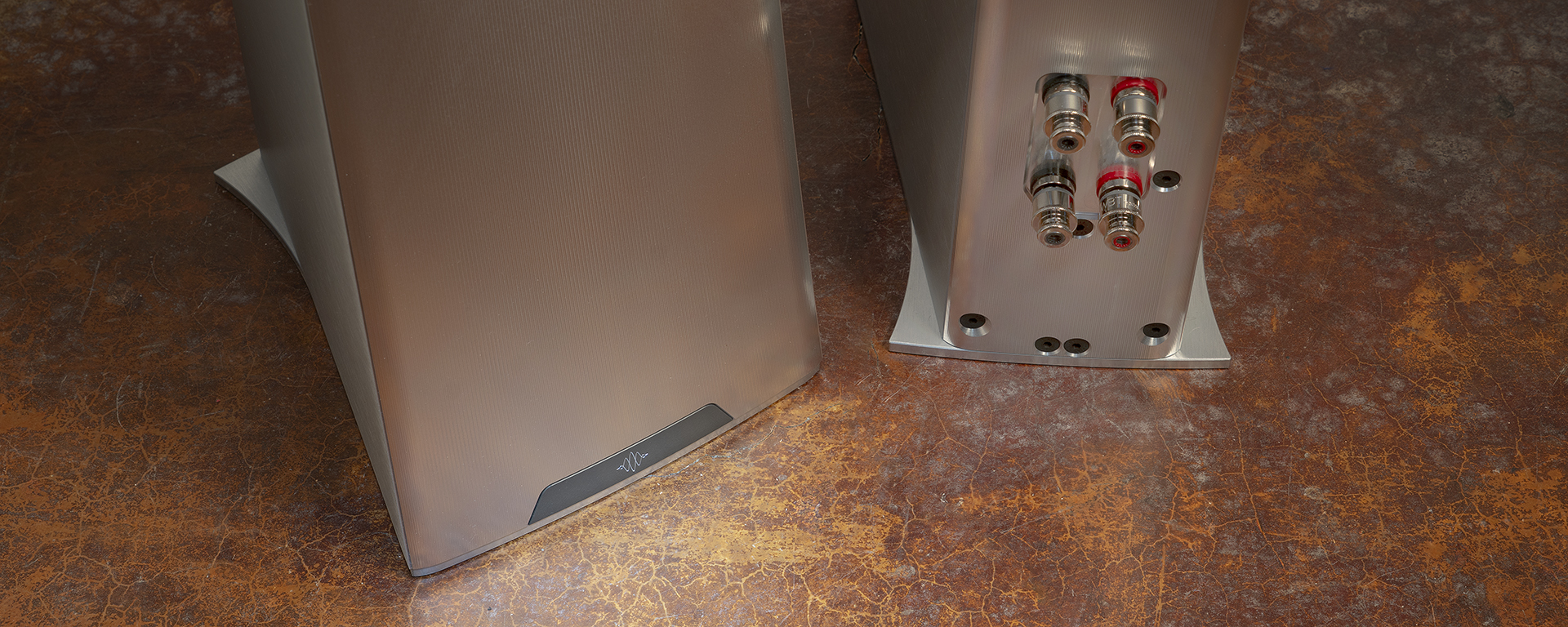 The tech behind the sound
The tech behind the sound
You can read the in-depth description of what YG does to create their own drivers, in-house, here on the YG site:
https://www.yg-acoustics.com/technologies/
Having visited their facility and taken a tour through the shop, I can vouch for their level of materials quality. The attention to detail in every single aspect of construction in YG speakers is exceptional. Calling this fanatic attention to fine detail doesn’t even begin to describe the level of quality going on here.
You might even say that YG bridges the gap between science, art, and execution to a level that I’ve rarely encountered in anything, be it cars, cameras, watches, or electronics. This is what you write the check for. This level of execution results in a modest-sized pair of speakers that sound like a massive pair of speakers. These are a pair of speakers that have had tens of thousands of development hours to deliver what they are.
Further listening
The proof is in the listening. Thanks to the dynamics, musicality, and extension at both ends of the frequency scale, the Carmel 3 never disturbs or fatigues, regardless of program material.
Yet there is something like a great two-way, with minimal circuitry in the signal path to bring home the sonic goods. The finest of musical details are always on tap with the Carmel 3. Running through a long lineup of familiar test tracks reveals male and female vocals to be on point and life-like.
I’m sure you have your favorites. And I’m sure you won’t be disappointed should you give the Carmel 3 a test drive. Tracking through Shelby Lynne, Aimee Mann, Patti Smith, and Doja Cat all illuminate these speakers ability to capture all the subtleties these singers bring to a performance.
This ability to reproduce the finest details without ever being harsh, bright, forward, or fatiguing is truly this speaker’s superpower. Changing the mood to Charlie Watts and the Danish Big Band is a significant departure from Doja Cat, but again, this jazzy, orchestral sound is large and lush. Woodwind instruments, and of course, Mr. Watts’ drumming, sound superb.
After a detour with The Fairfield Four’s Standing In The Safety Zone (male vocal test – passed with flying colors), it’s time to rock. Old school.
The Faces’ staple tune – “Stay With Me” works because this is a dense, compressed recording. The resolution of the Carmel 3s brings this tattered classic to life in a way that lesser speakers cannot. Bringing out the inner detail in several poorly recorded classics, regardless of genre, is another reason the Carmel 3s are worth the asking price. High resolution is more than just pinpoint imaging; it encompasses a broader range of capabilities. These are speakers that will present your recordings in the best possible light, not merely shining on flawless recordings. And that means you’ll listen more. That’s a great thing.
Forget the end and concentrate on now
Where an inexperienced reviewer might make the common mistake of labeling the Carmel 3 an “end game speaker,” I won’t take that approach with you. And for all those screaming voices on the internet hitting you with all these rules for your hifi system (why should fun have rules attached to it?) as to how much you should spend on speakers, cables, software, etc, etc – I’ve found one thing to be constant in now, almost 50 years of being an audio enthusiast.
You never know how far you’ll get into it. Until you get into it. Or as Joe Jackson said, “You can’t get what you want until you know what you want.”
Which leads me to frame the Carmel 3 in a couple of ways.
If you’re stepping up from a pair of $10k-ish speakers, and you like the way YG presents music, these speakers will be a revelation. All the popular audiophile cliches will apply, so there’s no need to repeat them here!
No shame in that at all.
If you’re in the process of your last round of upgrades and are putting together a system in the $50k-$150k range, the Carmel 3 could very well be the last speaker you need. But you might really get hooked by the way YG does things, and decide after a year or two that you need a bigger pair. You won’t be the last person that thought they were drawing a line in the sand, only to find themselves going much deeper into it than they every imagined a couple years prior.
Or, if you love the way YG does things, and you are working with a hard stop on room parameters. You’d love to have a pair of the big YGs, but you’ve got a 13 x 18 foot room (or thereabouts) and a larger speaker just won’t make sense. Because the Carmel 3 shares the same driver, cabinet and crossover technology present in their top speakers, albeit in a smaller, more compact cabinet – you can have a large helping of what their best speakers deliver in that context. That’s what makes the Carmel 3 such an incredible bargain. If you don’t have the Nurburgring close by, you’ll never really get the chance to experience what a 600-800hp hyper car can really deliver.
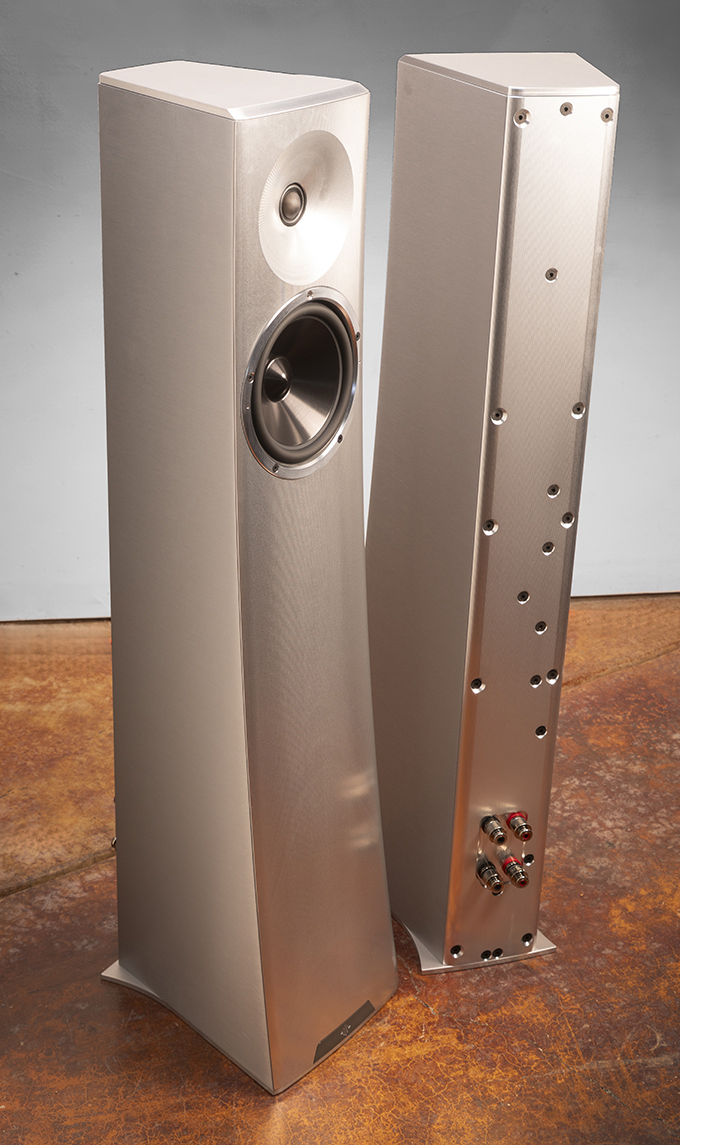 There’s a silly cliché among car people that goes, “It’s better to drive a slow car fast than a fast car slow.” This is an oxymoron because you can’t drive a slow car fast. What you can do is drive any car close enough to the limits of its performance envelope that it is immensely enjoyable because you are engaged. That said, it’s the most fun to drive a fast car fast, if you can.
There’s a silly cliché among car people that goes, “It’s better to drive a slow car fast than a fast car slow.” This is an oxymoron because you can’t drive a slow car fast. What you can do is drive any car close enough to the limits of its performance envelope that it is immensely enjoyable because you are engaged. That said, it’s the most fun to drive a fast car fast, if you can.
That’s exactly what the Carmel 3 delivers. Momma, that’s where the fun is. It’s great everywhere. The Carmel 3 is a perfectly balanced speaker in every aspect.
So, Carmel 3 or Summit?
Thought I forgot about that, eh? The presentation of the Summit is more laid-back, due in part to the wooden enclosure and the drive units being one click down in resolution from those used in the Carmel 3.
Both are excellent in their own way, yet I think the one you choose will depend on aesthetics and decor just as much as the overall performance. The Summits have a bit more LF extension, so if you are living in an environment that will never allow a subwoofer, you might be biased toward the Summits. And you might have to negotiate the wood vs. aluminum thing. YG’s Duncan Taylor goes a little further by saying, “Summit shares the same drivers as reference, except for the tweeter (it’s almost the same tweeter, just missing the featherlight aluminum “lattice”), but the biggest difference (aside from the cabinet volume and construction) is in crossover component price and complexity. In Carmel we have some of the most expansive phase-matching around the crossover point.”
Ultimately, it will depend on your sonic preference. If you already have a somewhat warm and romantic overall sound in your system, the Summit may be too much. Personally, I loved the Carmel 3s with Pass Class A amplifiers and some of the tube amps here on hand, yet found the Summits more to my liking with the Pass X600.8 and CH Precision i1.
When considering the purchase of a pair of Carmel 3s, you owe it to yourself to audition both. Neither is a bad choice, but one will be the best choice for you.
Think of the Carmel 3s as a slice of the world’s finest desert in a five-star hotel. Every bit as delicious, just not as much or as costly when the check comes. I’m cueing up Joe Jackson for one last visit to another world before I put these in the crate.
Highly recommended.
$30,000/pair
Peripherals
Digital Source dCS Vivaldi ONE
Analog Source SME 20 w/4.5i arm and Hana Umami Red cart
Phono Pre Pass Labs XP-27
Preamplifier Pass Labs XS Pre
Amplifiers Pass Labs XS 300 monoblocks
Cable Cardas Clear, and Clear Beyond.

